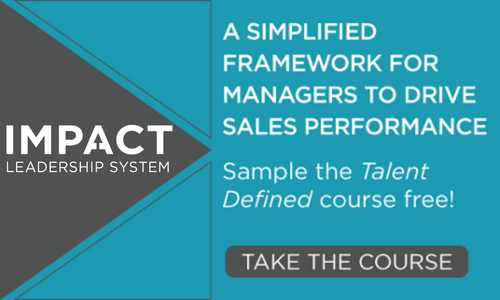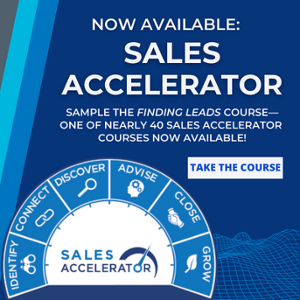
“CRMs are just another tracking tool.”
“I’ll spend more time trying to learn how to use it than actually using it.”
You’ve heard the complaints from your sales team about using a Customer Relationship Management (CRM) system. And, chances are if you’ve considered implementing a sales enablement tool like a CRM into your strategic plan to drive revenue, you’ve read a lot of articles that discuss the various reasons why most sales CRM systems fail.
There’s even a strong possibility this is why you’re hesitant to commit purchasing a CRM. No one wants to invest in a tool that statistics show to fail (mostly) because a sales team is reluctant to use it. As a sales manager, what can you do to ensure your sales reps use a CRM to its full potential?
First, you must understand why they’re wary.
6 Reasons Sales Reps Don’t Like CRMs
1. Garbage In, Garbage Out
The type of data tracked in a CRM should have a direct impact on improving sales performance. Too much data, and data not tied to your organization’s key performance indicators (KPIs), are often linked to this hurdle. Part of the challenge associated with CRMs is they’re very data rich. A good rule to follow is:
- Just because you can track the data does not mean you should — only track data tied to your organizations key performance indicators (KPIs).

Track the Right KPIs:
- Quality sales activity
- New business (target to key conversion)
- Dollars written
- Sales pipeline
- Key account retention
Another thing to consider is not using the data at all. Think about it, if a seller is required to update a CRM, and nothing is done with the data, why would they see value in this?
Plowing data into a black hole does not improve sales performance.
2. Big Brother
Let’s face it, CRMs have a “big brother is watching” feel to them. Helping salespeople understand the benefits of a CRM needs to be part of the installation and launch plan, and demonstrated during ongoing use.
The effectiveness of a CRM is diminished when sellers view them as an activity monitoring system and source of reprimand.
If your organization is struggling with this, consider conducting a brainstorming session with some key sellers who see the value of a CRM to get their input. This input can be used in your ongoing CRM communication strategy to help improve buy-in from sellers who are not fans of this resource.
3. A Lever or A Stick?
Nothing is more discouraging to a seller than a weekly (monthly or quarterly) beat-down because their CRM data is substandard (below KPI expectations and/or insufficient data not entered or updated in the system).
How Can You Avoid This Beat-Down Session?
If the data reflects poor performance related to KPIs, get to the root of the problem and develop a coaching plan to help the seller improve their activity level. For example; here’s a plan to help a seller struggling with a lack of quality appointments:
- Help the seller pick better prospects and follow a sales process to connect with new business prospects
- Consider using a sales enablement tool like a sales play designed to set appointments.
If the problem is related to insufficient data, use someone in an administrative role to insert and update data.
4. The Black Hole
CSO Insights — a division of the Miller Heiman Group, provides some powerful information:
Salespeople spend up to 65% of their time on non-selling activities, including entering data into a CRM system. When sellers manually input data into a system, only to have that data disappear into a black hole, they’re not inspired to invest additional time and energy into making their CRM’s data as good as it could be.”
Managers must keep this in mind and use the data in a CRM to help improve sales performance.
Example: Evaluating new business (also known as target to key conversion)
- Smart managers understand the importance. If a seller’s performance data in this area looks good (meets/exceeds KPIs), managers should celebrate the success.
- If a seller’s performance data does not look good (below KPIs), managers should work with sellers to develop a plan to select better prospects, set mare appointments and close more new business.
5. Transparency — Sometimes the Truth Hurts
Some sellers flat out don’t like using a CRM because it exposes that they’re not doing their job.
This solution here is simple: coach them up or coach them out.
6. More Busy Work
Some sellers view updating and entering data into a CRM as busy work or “just another task”. Making it easy for sellers to update information and not adding to their list of non-selling activities is important.
For example, at The Center for Sales Strategy, we use the HubSpot CRM that offers a blind copy feature on all emails sent to clients and prospects.
This easy to use feature updates the CRM on all email correspondence via inserting a code in the BCC section of an email. Managers and sellers can view all emails without any extra work like inserting notes or copy and pasting emails.
Another thing to consider is minimizing the manual input of data by sellers. If updating a CRM with data is important, this should be done by someone in a non-sales role.
Ensure CRM Success
From tracking prospect interactions to logging data and leveraging information, CRMs are capable of helping sales teams work faster and more efficiently. Sales statistics show that the CRM has already made a lasting impact on many organizations, and it shows no sign of slowing down. However, it takes the adaptation of the sales team and sales enablement tools to make it work.
You know rep’s automatically kick anything to the curb that disrupts their productivity. Show them how the CRM works in the sales process, allow them to be a decision-maker in the CRM system, and let them find the value in the software they love to hate.

